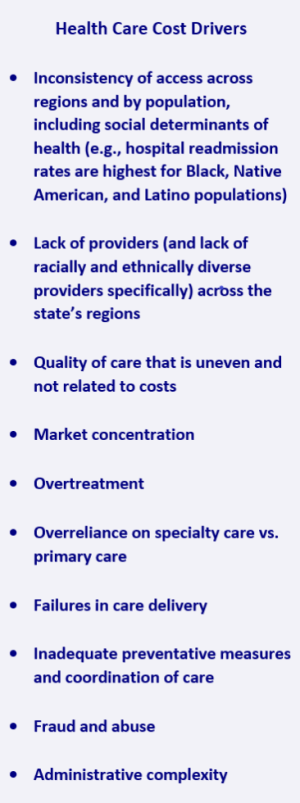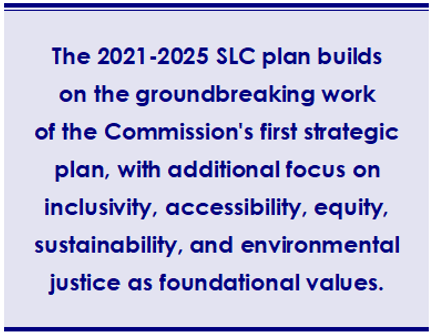You can also view this newsletter as a PDF.

CalPERS Implements Risk-Mitigation Strategy
to Incentivize Quality Health Care Options
The California Public Employees’ Retirement System (CalPERS) is the second-largest purchaser of health care in the state. It is responsible for providing health care benefits for 1.5 million active employees, retirees, and their families, 60 percent of whom are state employees and their dependents. The remaining 40 percent are employed by other public agencies that contract with CalPERS. The state’s other large purchasers – Covered California and the California Department of Health Care Services – collectively purchase health care for more than 14.5 million Californians. As large-volume purchasers, they are better positioned than individuals to negotiate health care rates. However, they still face complex challenges in ensuring access to quality health care for their members. CalPERS, specifically, also must strive to satisfy members’ benefit preferences.
Although the state contributes to CalPERS employee and retiree health care benefits through collectively bargained agreements, health care costs continue to rise exponentially. According to a study by the Peterson Center on Healthcare and the Kaiser Family Foundation, health care spending in the U.S. rose nearly a trillion dollars between 2009 and 2019, when adjusted for inflation. Healthcare spending in the U.S. in 2019 was nearly $3.8 trillion, or $11,582 per person. This cost is expected to climb to $6.2 trillion – roughly $18,000 per person – by 2028.
Before seeking board approval for the next year’s open enrollment plan design options and rates, CalPERS staff spent months working with insurers and plan providers to secure the best care options available at the lowest price they can negotiate. In a world of constantly rising costs and increasing inconsistency of health care delivery options by region, this can be a herculean effort. The CalPERS board and staff are constantly assessing cost drivers, beneficiary claims data, and health care delivery options across the state.
While complexity of payment and delivery options provide choice and competition, they also impede system-wide assessment and accountability, as well as sustainable long-term strategies for statewide improvement. Barriers to informative data collection remain a challenge. Reporting is inconsistent across the state, and there is lack of agreement on how to measure patient experience and care outcomes. All of these factors stand in the way of addressing costs.
Since 2019, CalPERS staff have focused on options to mitigate premium rate volatility some preferred provider organizations (PPOs) and health maintenance organizations (HMOs) were incurring. This rate volatility was creating what the health care industry calls a “death spiral.” As healthier members migrate to lower-cost network plans, those needing more care remain in higher-cost plans, which begin to struggle financially as the care demands of remaining members escalate total plan costs. At this point, plan options are priced not based on their value, but on the concentration of healthy or unhealthy people in each plan. Spiraling plans then try to reduce costs to remain competitive, often introducing narrow network alternatives to attract only healthy members, exiting high-cost areas, or removing high-value providers not treating high-cost conditions in a cost-effective manner. Death spiral risks, ongoing rate volatility, large-scale member migration, and loss of several of CalPERS’ HMO and PPO options warranted decisive action.
 In 2019, CalPERS terminated the existing risk-adjustment model because it was too complicated to administer and lacked transparency. Its four-stage process took two years to complete, which did not align with the annual rate-setting schedule. Complex back-end transactions to fund transfers between health plan subaccounts in the system-wide Health Care fund were administratively burdensome and impeded staff’s ability to project health care costs for setting premiums.
In 2019, CalPERS terminated the existing risk-adjustment model because it was too complicated to administer and lacked transparency. Its four-stage process took two years to complete, which did not align with the annual rate-setting schedule. Complex back-end transactions to fund transfers between health plan subaccounts in the system-wide Health Care fund were administratively burdensome and impeded staff’s ability to project health care costs for setting premiums.
When proposing to terminate the risk-adjustment model, CalPERS staff outlined plans to assess the underlying cause of and options for addressing premium disparities among the PPO Basic options. PPO Medicare Supplemental plans were not included, as they are not experiencing cost-disparity issues. Staff conducted an in-depth analysis of premiums, enrollment, member migration patterns, cost trends, and benefit and network differentials. Working with health care industry experts, staff vetted and presented several options to the board. They explained if nothing were done, the death spiral would continue and quickly render some plan options unsustainable.
Purchasing and applying reinsurance or stop-loss funding for outlier health care costs and disbursing these costs among all basic members – rather than just by the specific plans funding those claims – was rejected for effectively perpetuating the status quo. Reinsurance helps avoid the death spiral, but it does not address its root causes and would add to CalPERS’ program costs. Plans would remain incentivized to chase healthier risk and not incentivized to manage less healthy, higher-cost members. Eliminating plans or merging existing plans would cause significant disruption to members’ ability to access care, especially in areas of the state with only one HMO option. Eliminating even one HMO could mean cutting off member access to major area provider groups not in another HMO’s network.
With the goal of ensuring plans be priced on their value and incentivized to effectively manage members’ health, staff and the board concluded applying risk-neutral pricing would enable members to pick the product that best meets their needs. Currently, many members pick the least expensive plan – or the most expensive – because they think it is their best option, even though the price does not reflect its value. Risk-neutral pricing entails removing the average risk score for the medical and pharmacy costs for enrolled plan members from the published premium and rates. A CalPERS’ member with a risk score of “1” indicates the person’s medical costs are average for the basic program. An individual’s risk score can be below or higher than the average person depending on medical needs. Risk scores are credible for this purpose when the plan has at least 25,000 members. For plans covering the smallest number of employees, staff applied a standardized actuarial tool used by Medicare, Medicaid, and the state’s insurance regulator to ensure those also were credibly adjusted.
These risk-score rates will be publicized so plans are incentivized to build more reserves in their product to cover costs for members with health issues. Initially, this value-based pricing will result in increased premiums for lower-priced plans. Ultimately, however, it will stabilize premium volatility and end the death spiral of plans populated by older, sicker members. This should result in more stable migration patterns, which will help CalPERS staff better anticipate how many members are going to move in and out of each plan, as pricing will no longer drive unhealthy risk in one direction.
Without risk mitigation, plans would continue to compete to attract only health members, instead of competing on cost and quality of care. Risk mitigation has the added benefit of enabling CalPERS staff to focus their time and attention on other long-term, innovative cost-saving and quality improvement options, such as bringing the right kind of plan competition to each area of the state and encouraging the right provider partnerships to deliver care in low-cost, high-quality settings.
State Lands Commission Builds on
Successes of First-Ever Strategic Plan
 In June 2020, the California State Lands Commission (SLC) returned approximately 40 acres of land in Inyo County to the Lone Pine Paiute-Shoshone people, to preserve and protect tribal cultural resources. This was the first time SLC – on which Controller Yee serves, and which she chairs in even-numbered years – has returned state land to a tribal government, emblematic of the continued evolution of the Commission.
In June 2020, the California State Lands Commission (SLC) returned approximately 40 acres of land in Inyo County to the Lone Pine Paiute-Shoshone people, to preserve and protect tribal cultural resources. This was the first time SLC – on which Controller Yee serves, and which she chairs in even-numbered years – has returned state land to a tribal government, emblematic of the continued evolution of the Commission.
Established in 1938 by the California Legislature, SLC manages 4 million acres of tide and submerged lands and the beds of natural and navigable rivers, streams, lakes, bays, estuaries, inlets, and straits. The Commission also is the trustee of approximately a half-million acres of land managed for the benefit of the California State Teachers’ Retirement System.
Controller Yee brought together a diverse group of stakeholders to develop SLC’s 2016-2020 strategic plan, a historic first for the Commission. It focused on performing responsible land and resource management while addressing future challenges. That plan led to adoption of a meaningful Tribal Consultation Policy, and SLC’s first Environmental Justice Policy, both of which made actions like the land return possible.
Other notable accomplishments achieved through SLC’s first-ever strategic plan include:
- Dedicating more than 16,000 acres to the California Coastal Sanctuary, protecting offshore lands and resources that can no longer be used for oil and gas production;
- Plugging and abandoning dozens of coastal oil wells, all ahead of schedule and under budget;
- Approving decommissioning of Units 2 and 3 of the San Onofre Nuclear Generating Station;
- Entering into a landmark collaboration agreement with the California Coastal Commission, California Department of Parks and Recreation, and the California Coastal Conservancy for a planning process to inform the development of a coastal access program at Hollister Ranch in Santa Barbara County;
- Investigating the Cemex coastal sand mining operation and reached a settlement, in partnership with the Coastal Commission and the city of Marina, to cease active sand mining; and
- Launching a new web-mapping application for state waters offshore in San Diego, designed to help users better understand the dynamic ocean space and ocean-related data offshore in San Diego County.
The 2021-2025 California State Lands Commission Strategic Plan, adopted in February, builds on that groundbreaking work with additional focus on inclusion, accessibility, equity, sustainability, and environmental justice as foundational values. The Commission focuses on these values in its approach to all activities and statewide responsibilities.
The plan update began in 2020, during a year of tremendous change. Against the backdrop of a global pandemic, the nation began a racial reckoning. Americans and their institutions began to examine, reflect, and look ahead to how we can do better and be more inclusive. Through a thoughtful and collaborative process, the Commission sought out and listened to diverse and varied voices and interests across the state that informed the initial findings. SLC then asked for more feedback during public meetings, and in listening sessions with California tribal governments and other key stakeholders.
 2021-2025 strategic focus areas include:
2021-2025 strategic focus areas include:
Leading Climate Activism – The Commission will work to advance California's climate and clean energy legal and policy framework to proactively address climate change.
Prioritizing Social, Economic, and Environmental Justice – The Commission will work to address injustice and remove institutional barriers by enhancing its existing environmental justice policies and correcting historic actions that displaced populations and created structural inequities.
Partnering with Sovereign Tribal Governments and Communities – SLC will seek opportunities to partner with tribal governments and communities and institutionalize meaningful engagement.
Meeting Evolving Public Trust Needs – The Commission embraces a public trust doctrine (from which most of SLC’s powers stem) that is reflective of a modern era and changing societal values and needs.
Leveraging Technology – SLC will align priorities and seek resources to continue technological advancement and innovation efforts that support and enhance the Commission’s mission.
Committing to Collaborative Leadership – SLC will provide statewide leadership in all of these strategic focus areas and create clarity of direction by offering continual, robust opportunities for stakeholder and public engagement.
Building a Reimagined Workforce – The Commission will provide training and educational resources for staff related to evolving land and resource management best practices, renewable energy development, project management, equity, and new issue areas to prepare and empower staff for emerging challenges.